In the polymer clay there is some kind of magic. Here you have a few pieces of clay, like more on plasticine, and then once - and from this it turns out unusual patterns, forms. One of my favorite kaleidoscope technicians.
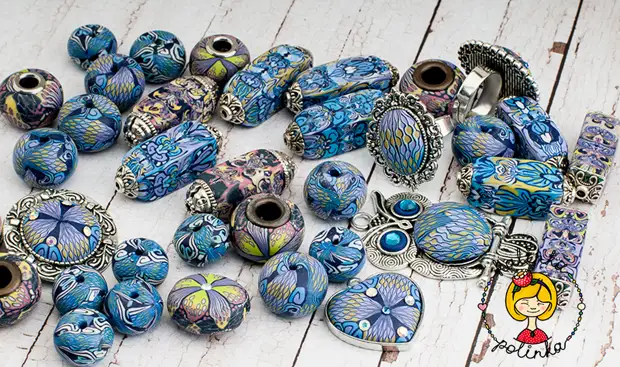
I use DMO polymer clay. From the tools you need a knife, a paste-machine (napshirezka) or a rolling pin.
Suspension-setting can be useful for the use of a polymer clay to use the polymer clay for jewelry and basics for rings, brooches with settings.
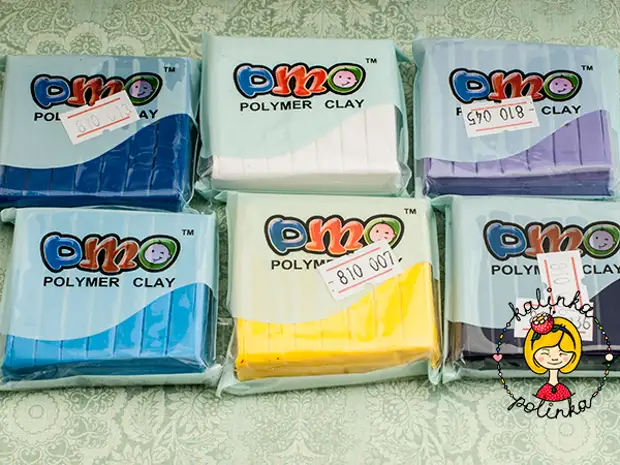
In kaleidoscopes of polymer clay, color transitions look good. For this, two clay colors (approximately half a color) roll together, then fold in half and roll a little with a color displacement. Rather on the middle thickness, hanging the edges to the rectangle.
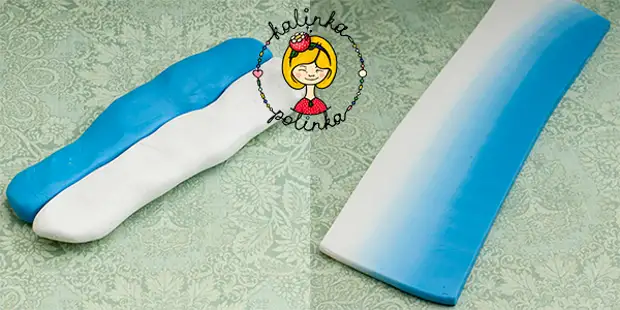
The contrasting color rolled finely, add it to the lower layer, cut the edges.
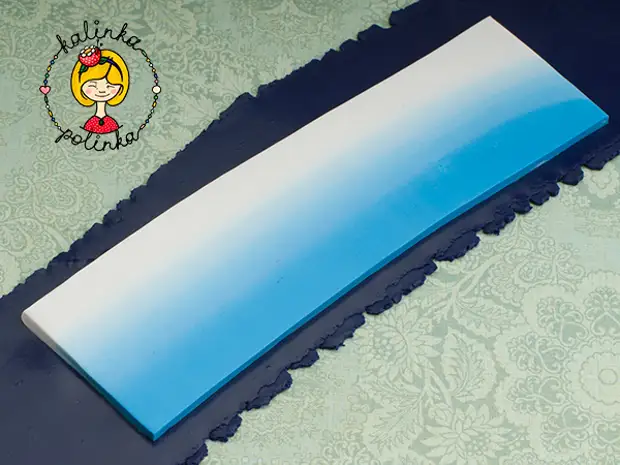
In yellow clay, I added a bit ink to slow down the brightness. Lavender clay and yellow rolling with tubes, distribute along the entire length at equal gaps.
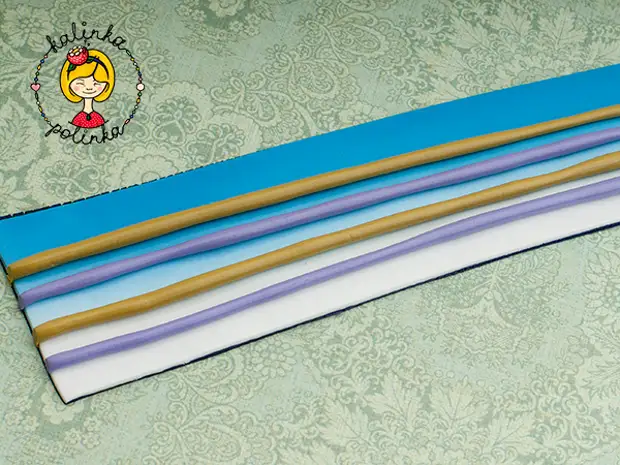
I cut on the same pieces of approximately 4 cm.
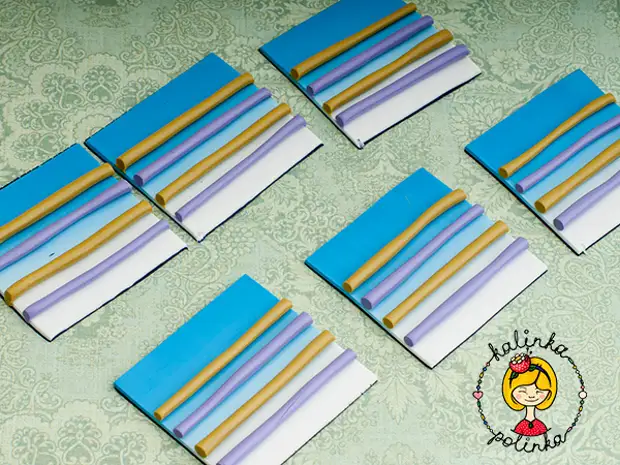
I put the layers, shifting the tube to one row up-down.
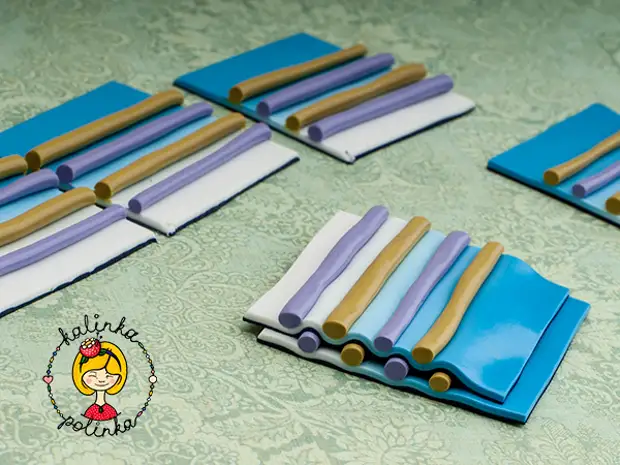
I got 6 layers, but their number is not fundamentally. The more layers, the more detailed the figure in the figure. Kray in the place where the layers were shifted, flatten and cut the surface at the same time, simultaneously pressing the surface with his fingers to squeeze the excess air, but not so much so that Kane would start.
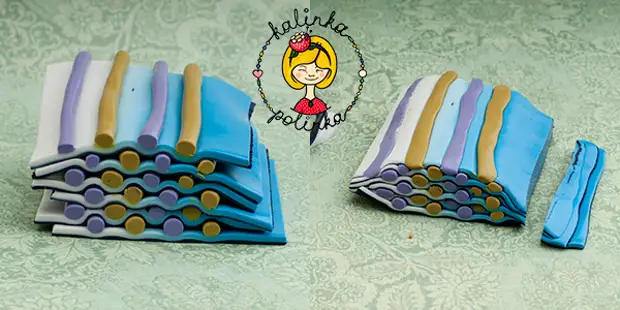
If at this stage of the Kane from the polymer clay to press, cut and fold symmetrically, then it will be quite an independent billet, for example, flower petal.
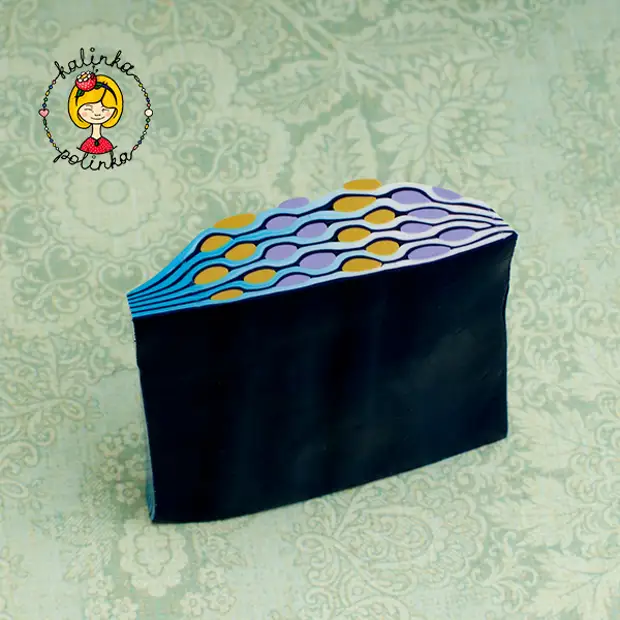
We prepare another color transition. Complete petal curl. To do this we fold two layers with a color transition with a dark layer in the center.
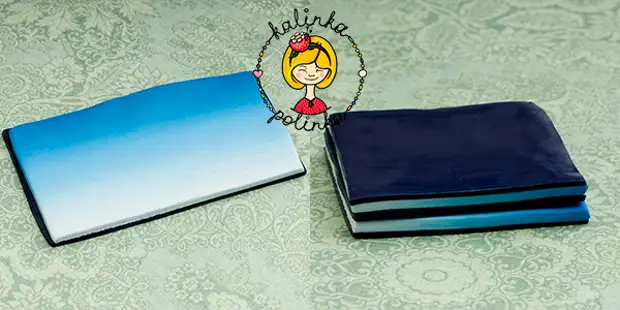
Fall the edges, we turn one edge roll, but not to the end, but about the middle.
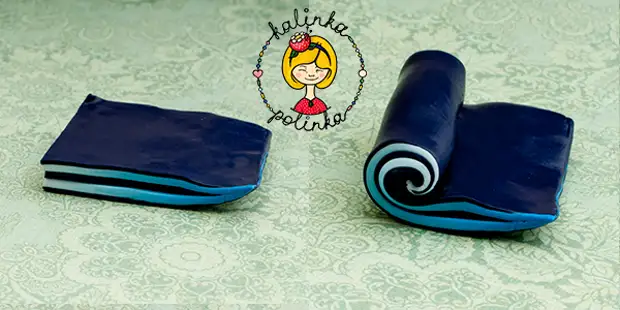
I apply curls to the petal with streaks, supplement to the triangle Kane curl or simply monochrome tubes. The triangle in the context should turn out to be with one direct angle and equal control (here it was useful to geometry)))). I climb.
The triangular cane molding from the polymer clay occurs as follows: Kane is placed on one line, and the opposite corner is pulled out. Then turn to the next edge, I pull the next corner. Watch that the meanly I also climbed, did not stand in place, and watch the angle. I climb about 15 cm. Cutting in half.
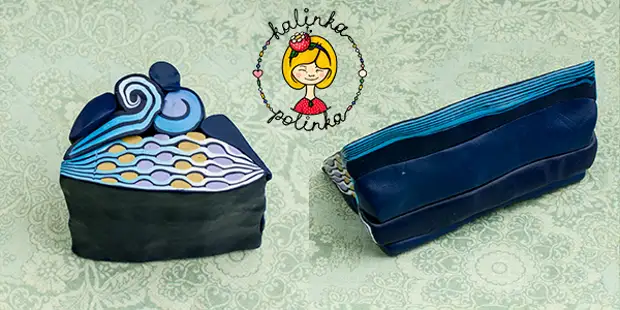
After cutting, we have tails with defects, while we leave them in place. Triangular Kane add to each other with hypotenuses, form a square element of the future kaleidoscope from polymer clay.
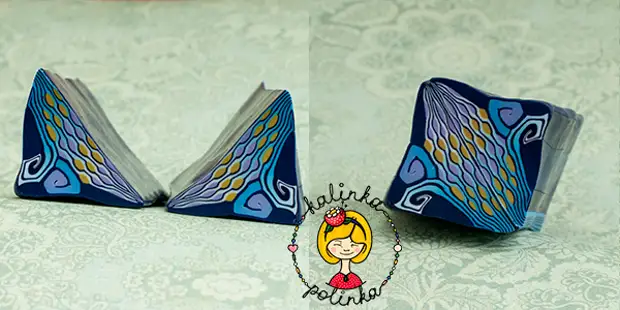
After I squeeze it about 20 cm, stroke the rolling corner and the surface so that they are smooth, cut off the ends until the same pattern is the same on both sides. Cut the resulting Kane into 4 equal parts.
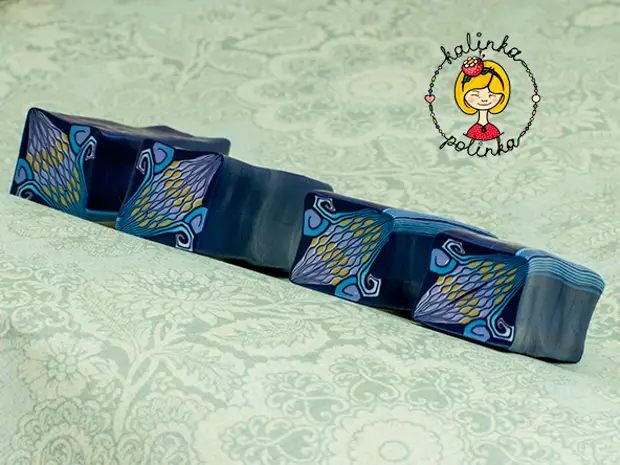
I put the squares symmetrically, keeping the drawing to coincide. I climb the square to the desired size.
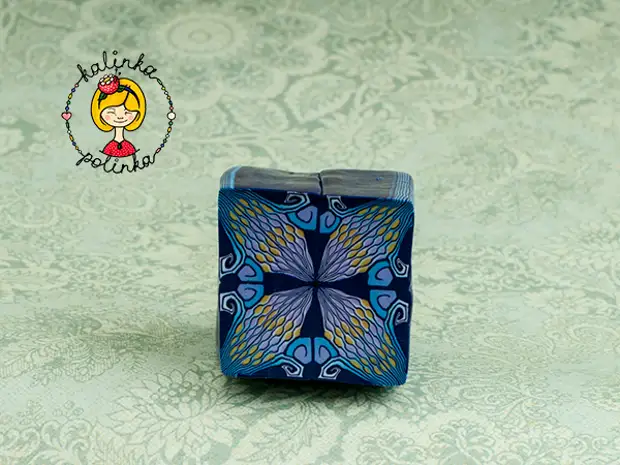
Variations of kaleidoscopes from polymer clay are limitless. Below are several options for kaleidoscopes with an element in the form of a petal.
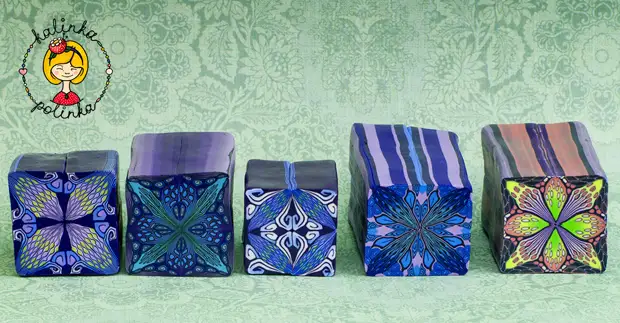
In this bright kaleidoscope, I added accommodation only to the middle, and the tubes-stamens are wrapped in contrasting clay before being laid between the layers.
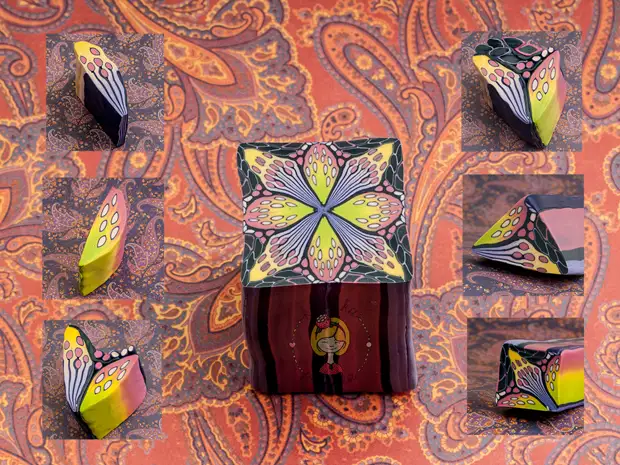
Kaleidoscope made of polymer clay is a light technique and, if you are a novice, and during the modeling something will not go wrong, at the end anyway it will turn out to be surprising).
Beads from polymer clay residues
So, we have kaleidoscopes, but they have trimmed, uneven edges, mixed colors. These trimming is just a treasure for the manufacture of beads in the technique. The lesson on this technique already has on our website. The photoumus presented below is briefly illustrating the process of creating beads from polymer clay residues.
Photo 1. All trimming remaining from Kane Kaleidoscope, we collect in a bunch, squeeze the air, soften them to the same density.
Photo 2. Trimming twist, we try so that the lines become almost perpendicular to.
Photo 3. Kane flare up to a square state and cut into the size of future beads.
Photo 4. Cut the workpiece into 2 parts. It is necessary to make a sharp fast movement with a sharp knife.
Photo 5. We cut each part in half from the inside (this is important), do not shift them from place to place, so that they remain in the same order.
Photo 6. Turn the first two cuts as if we turn a little, they are symmetrical inside. Glue.
Photo 7. Add the third and fourth slice. Bead is obtained inside out.
Photo 8. All seams usually glued well, in addition to the place where the first cut was. This seam must be rolled up with a toothpick as a small ringer.
Photo 9. Hole can also be done with a toothpick or needle, hang edges.
Photo 10. Beads are ready. If you are planning to use in the decoration of the hats for beads, it is best to "lift" them in advance. Due to the complex shape of the beads after baking, picking caps will be more difficult.
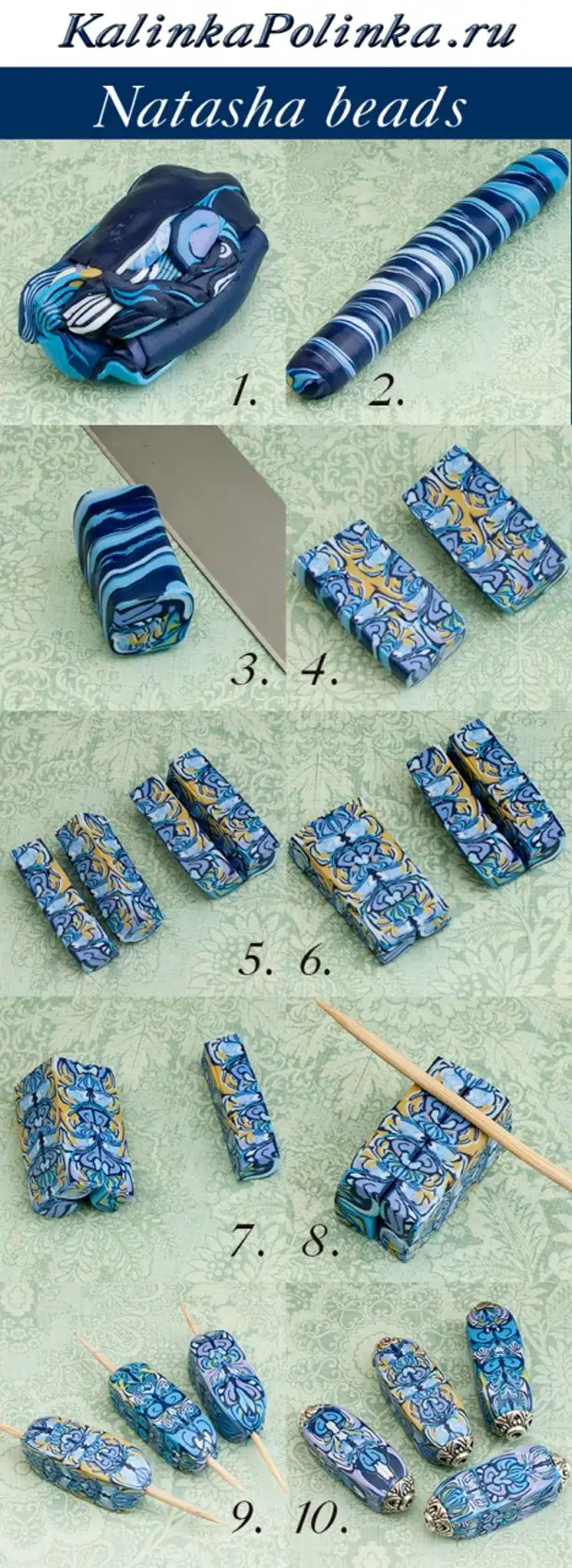
You can use not only kein-kaleidoscope sections, but also different trimming. They do not even have to be integer.
I use square kane's tails for the following beads.
Photo 1. Cutting a Kane from polymer clay with thin pieces. In order for the beads to be the same size, roll off the clay layer and cut out any shape pieces, so the same balls are obtained.
Photo 2. Wrapping the balls with Cane cuts in random order
Photo 3. I cut off the ends in the squares. Sometimes they look very rude.
Photo 4. I ride in my hands until the borders of the sections become invisible. It is better to do in gloves, not only because there will be no prints, but the drawing is obtained with cleaner lines, not blurred. The hole turns out beautiful if to make a toothpick hole to the center of the beads, and then on the other hand towards through.
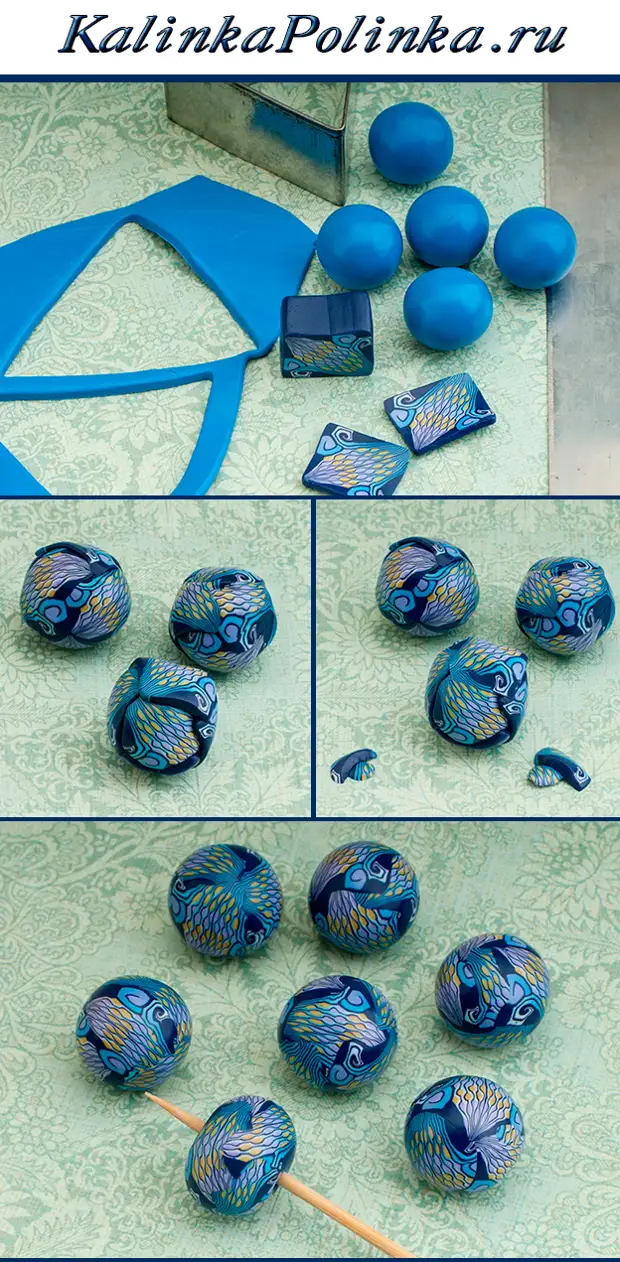
Baking beads in airhril at 130 degrees. I lay them on the harmonica of paper. You can bake beads along with metal parts, but you can also remove them from clay.
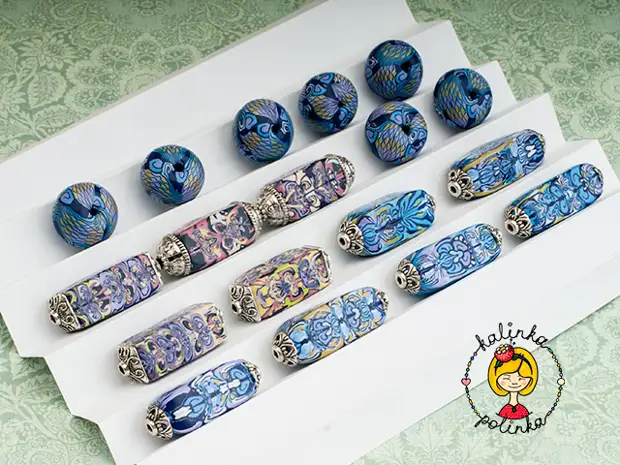
In order to make a pendant in a kaleidoscope technique, you do not need to pick up a mold (catter) under the size of the workpiece. You can enter a picture in any size and shape. For I first prepare a monotonous background. Its thickness depends on the size of the setting. The more the framework for jewelry, the thicker needs the basis, it is like a frame. Then I roll a smooth cut on it. If it is immediately seen that the size of the setting is greater than the Kane-kaleidoscope slice, on this basis it will be possible to lay out several cuts, doped with the drawing. Ride the cuts to this basis by the rolling pin. Then we apply the frame to the workpiece and cut the shape with the knife along the printed circuit. Then in the hands of a little pushing the center upwards, and the edges are gratifying as if we stretch the drawing to the edge, simultaneously slightly reducing the size. We get a deputy dome, which we just put in the frame. After hanging the form of the resulting insertion on the frame. We bake together with the setup, after that we definitely glue the workpiece into the frame with super-glue or epoxy glue. According to the description, probably it seems difficult, but in fact it's all very easy)
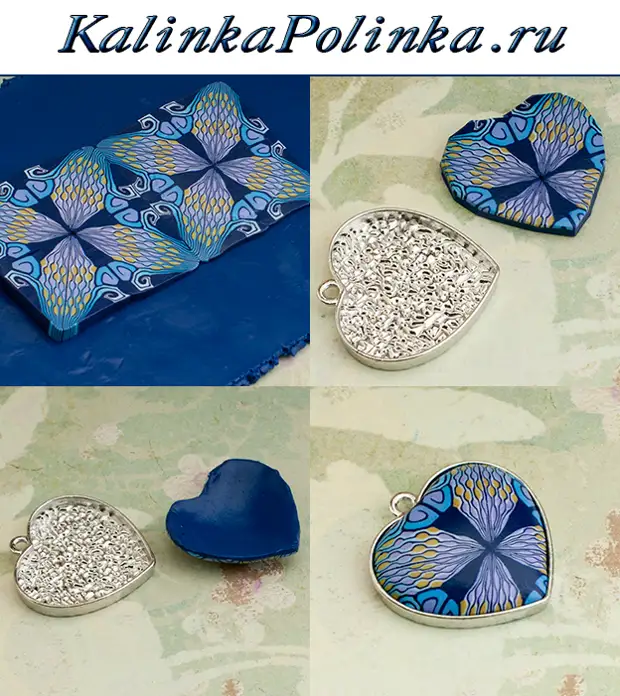
Tableware in the Kaleidoscope technique
Came cuts from polymer clay can be used to design dishes. How to do it, I told in another lesson. When working with Chinese clay, consider that it is very strong after baking. If the product needs to be grinding, bake it not to the end, grind, and then supplement finally. My experience of grinding this vase says that it is almost impossible to polish it by hand after baking.
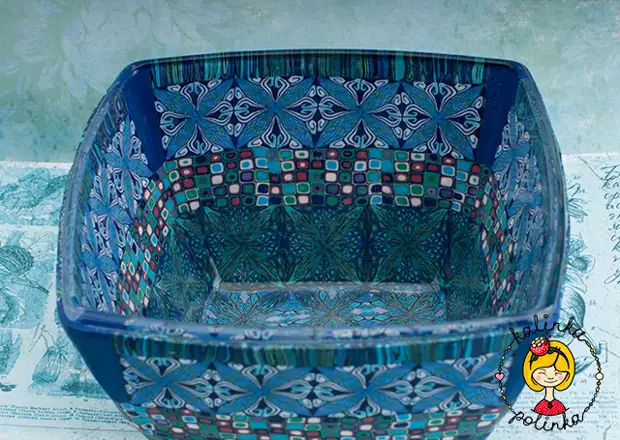
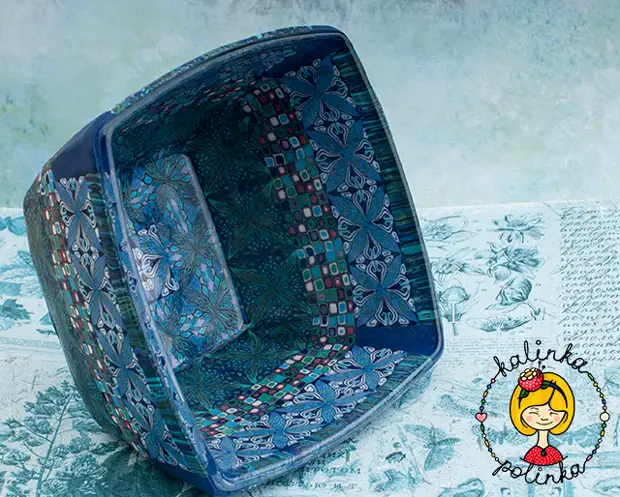
The remaining segment of polymer clay canes can be maintained for future work. So that it does not crack to wrap it with a food film. In no case keep Kane in paper. It will absorb plasticizer and work with them will be very problematic.
These are the beads turned out after baked. Remember that all metal and glass details after baking will need to be glued. Rhinestones can stick firmly in the process of baking only if they have a glue layer.
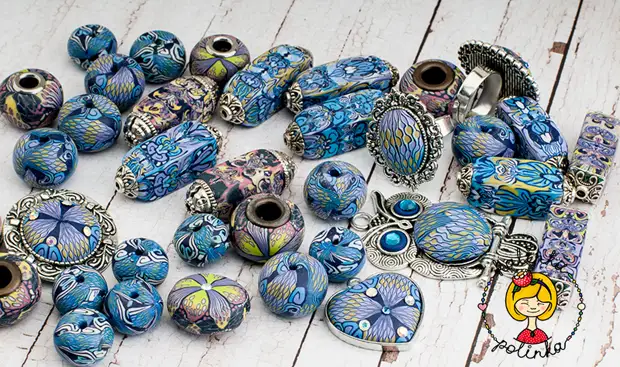
I do not like to keep the remains of Kane for a long time. As experience showed, over time they are still difficult to recycle, they are easily cracking when trying to press. Kane from the refrigerator behave better. But I noticed that I almost don't use old Kane, and I want to add them new) easier to recycle everything at once. Today we found many ways how to spend them with benefit)
Creative mood you!
A source
